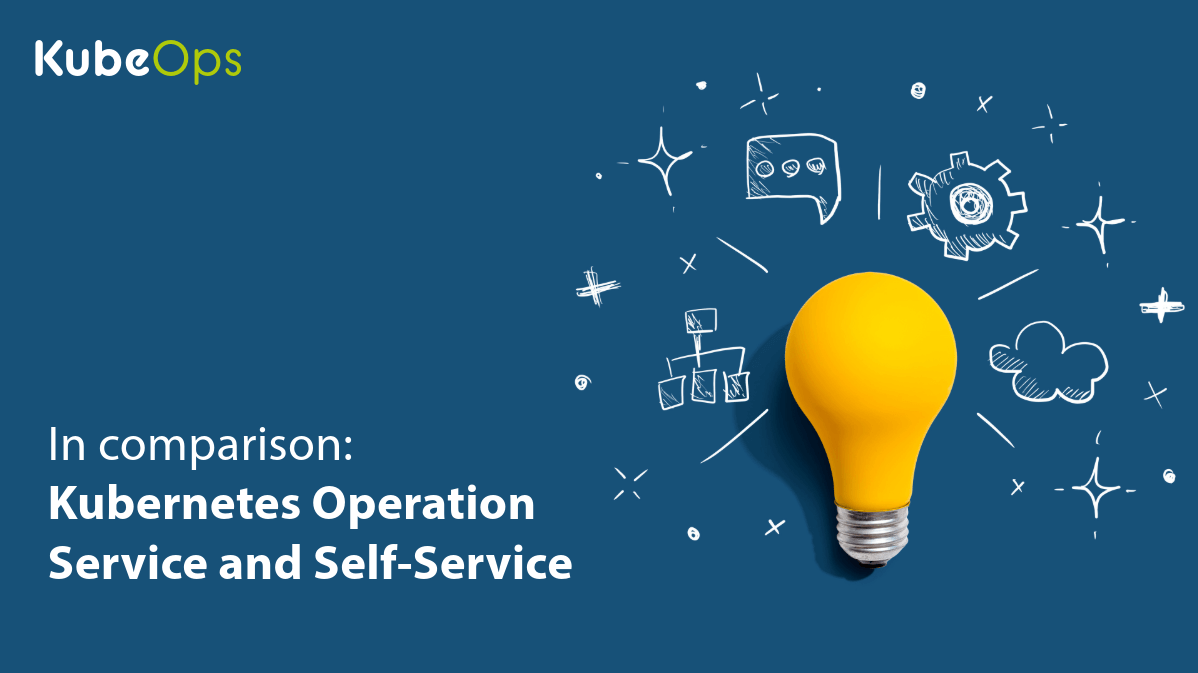Blogs
In comparison: Kubernetes Operation Service and Self-Service

Kubernetes Operation Service
Kubernetes Operation Service, for example based on KOPS or KubeADM, represents a more centralized and controlled method of managing Kubernetes clusters. This approach typically involves a dedicated team or role responsible for creating, configuring, and maintaining Kubernetes clusters. Here are some key characteristics of Kubernetes Operation Service:
1. Expert Involvement:
- Kubernetes Operation Service often requires specialized knowledge and expertise.
- A dedicated team or administrators oversee cluster provisioning and management.
2. Standardization:
- Clusters are provisioned according to predefined standards and best practices.
- Configuration and security policies are uniformly enforced across clusters.
3. Stability and Reliability:
- Stricter control leads to more predictable and stable clusters.
- Updates and maintenance tasks are carefully managed to minimize disruptions.
4. Security:
- Security policies are consistently applied, reducing the risk of vulnerabilities.
- Compliance requirements can be more easily met.
Risks of Kubernetes Operation Service:
1. Flexibility Constraints:
- Centralized control can hinder rapid responses to changes or specific requirements.
2. Bottlenecks:
- Requests for cluster adjustments or resource scaling might face delays.
3. Higher Costs:
- Employing specialized administrators or a dedicated team increases operational expenses.
4. Innovation Barriers:
- Strict adherence to standards may limit experimentation and innovation.
- Kubernetes Self-Service: Empowering Development Teams
Kubernetes Self-Service
Kubernetes Self-Service represents a more decentralized and empowering approach, where development teams have greater autonomy in managing their Kubernetes clusters. Here are some key characteristics of Kubernetes Self-Service:
1. Developer Autonomy:
- Development teams can provision, configure, and manage their own Kubernetes clusters.
- Faster iteration and deployment cycles are possible.
2. Agility:
- Self-Service allows teams to experiment and innovate rapidly.
- It supports a more agile development culture.
3. Innovation:
- Encourages the adoption of new Kubernetes features and technologies.
- Teams can tailor their clusters to specific application requirements.
The Risks of Kubernetes Self-Service
1. Complexity:
- Without centralized oversight, there's a risk of cluster inhomogenity and inconsistency in configurations.
- Managing a diverse set of clusters can become complex and challenging.
2. Security:
- Security practices may vary across teams, potentially exposing vulnerabilities.
- Compliance requirements can be harder to enforce uniformly.
3. Resource Management:
- Teams might overprovision resources, leading to increased costs.
- Optimizing resource allocation requires careful monitoring and governance.
4. Learning Curve:
- Teams may need to invest more time in learning Kubernetes, potentially slowing down initial development efforts.
- Insufficient knowledge can lead to misconfigurations and downtime.
Striking the Right Balance
The choice between Kubernetes Operation Service and Kubernetes Self-Service is not binary. Many organizations find success by striking a balance between these two approaches. Both have their advantages and disadvantages, and the choice should align with your organization's goals, culture, and capacity for managing complexity. Striking the right balance between central control and developer autonomy can help harness the power of Kubernetes while mitigating potential risks and challenges. Remember that the key is not just in the approach you choose, but in how effectively you implement and manage it.

